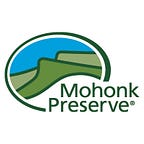Research Report #7 — Halos, Mock Suns, and Coronas
For many years scientists and naturalists have been studying and observing the flora and fauna of the Shawangunk Ridge. Foremost among them was Daniel Smiley, for whom Mohonk Preserve’s Daniel Smiley Research Center is named. Dan wrote numerous reports summarizing his observations on various topics. This regularly occurring series will feature some of these reports; some hold tremendous scientific value today and just await an interested researcher to follow up, others showcase a quirky sense of humor or highlight an oddity of nature.
Read the report: “Halos, Mock Suns, and Coronas”. March 1974. Daniel Smiley.
A Note From Director of Research Emeritus Paul Huth:
Recording the weather at the Mohonk Lake Cooperative Weather Station (NWS) is very much an observational process. While temperature and precipitation is the primary daily focus, lots of secondary observations are possible and notable. These might include such things as wind, fog and haze, snow and ice conditions, runoff, clouds, and solar phenomena like halos and sun dogs. We also have been known to record phenological events like the first arrival of bird species by sight and song!
Dan Smiley (1907–1989) became official Observer at the Weather Station in December 1937 and served in that capacity for the rest of his life. He was a premier observer and on many occasions was motivated by a natural event or observation to investigate it and write up a documentary research report. That was the catalyst for this report on halos, mock suns, and coronas.
Most halo phenomena associated with the sun and moon are the result of light interacting with very small ice crystals of various shapes, like plates, columns, or needles, forming thin clouds in the upper atmosphere. The result can be remarkable and include, in the Mohonk record, such things as partial or complete solar and lunar halos, mock suns or sun dogs, iridescent
clouds, and afterglow. Dan was careful to note, that in the early weather record going back to 1896, secondary phenomena were not recorded. The first halo was noted in 1946. While almost half were recorded in the years 1972, 1973, and 1974, at the time of his summary report, Dan carefully noted that “this does not indicate more frequent occurrence but simply more careful sky observation and recording.” However, he was able to suggest that “consistent sky observation every day throughout the year would show some form of solar halo visible every three or four days, with more being seen in April and May.”
During the ensuing 43 years, Dan and I together (and me as Official Observer after Dan), and our present staff and “climate tracker volunteers,” still note secondary phenomena, like halos and sun dogs, when we can for the record. We do get some curious questions from our online monthly weather summary like “what is a sun dog?” and have fun responding at a great teachable moment.
I don’t usually recommend references, but I think this is one that everyone should have if interested in the weather and the atmosphere. It is A Field Guide to the Atmosphere by Vincent J. Schaefer and John A. Day, part of The Peterson Field Guide Series, published by Houghton Mifflin Co. Vince was a good friend of Dan, mine, and Mohonk Preserve, and was a Research Associate and Research Committee member. He also served on the Preserve’s Board of
Directors, and was a founder of our annual Schaefer Summer Internship Program with his wife, Lois.
Read the report: “Halos, Mock Suns, and Coronas”. March 1974. Daniel Smiley.
This Mohonk Trust Research Report appeared, with permission, in The Chirp, the Bulletin of the John Burroughs Natural History Society, in April 1974.
